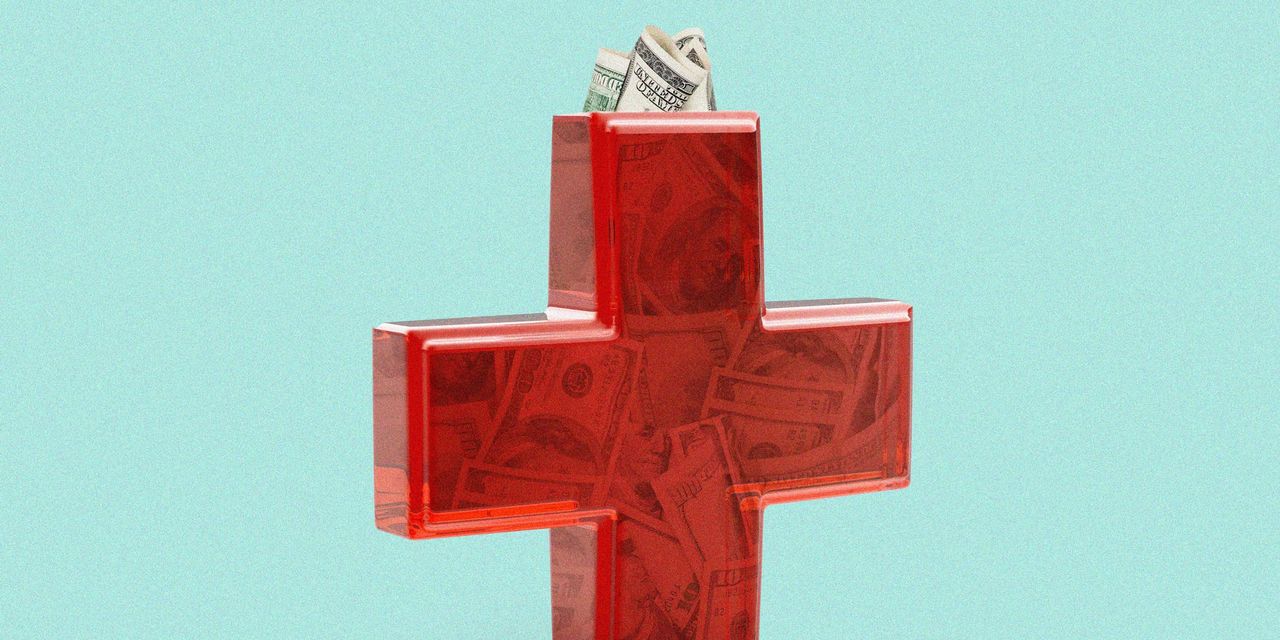Healthcare costs consume a growing share of retiree budgets over time. Because they typically rise at a rate higher than inflation, do healthcare expenses deserve their own bucket within the portfolio?
Some experts say yes, that from a behavioral and financial standpoint it helps to carve out funds for this daunting line item. A single 65-year-old retiring this year should plan to have saved an average of $157,500 to cover healthcare and medical expenses throughout retirement, according to Fidelity’s 2023 Retiree Health Care Cost Estimate. For a couple, that number is $315,000. This estimate assumes the balance remains invested, earning a low return, and includes standard Medicare premiums, deductibles and coinsurance; it excludes over-the-counter medications, most dental care and long-term care.
A dedicated healthcare bucket could take many forms, from a health savings account to an individual retirement account to a taxable brokerage account that’s reserved for a single purpose.
Healthcare costs might not seem exorbitant at the beginning of retirement, yet they tend to rise at a rate of 1.5 to 2 times the consumer price index, or CPI. This hasn’t been the case in recent years, due partly to the long-term nature of healthcare contracts, but experts expect medical costs to revert to, or even exceed, trend in the coming years.
It isn’t just medical costs that drive higher expenses throughout retirement—it’s that most older adults consume more of these services as they age. The median household devotes 10% of total expenditures to healthcare at age 65, versus 20% by age 85, according to research by David Blanchett, now head of retirement research for PGIM DC Solutions.
Retirees might not be prepared for this escalation if they budget only for general inflation. To calculate retirement expenses, one common approach is to tally up your expenses and then apply a standard 2% or 3% inflationary bump each year.
A better approach, some argue, is to have an account earmarked for healthcare expenses. “It’s good to have something that’s dedicated,” says Ron Mastrogiovanni, CEO of HealthView Services, a firm that provides retirement healthcare-cost tools and data to financial advisors. “I think it creates more peace of mind.”
HealthView Services just launched a product that helps financial advisors manage clients’ retirement healthcare costs. The software estimates a person’s individualized expenses, factoring in health status and geography. It then invests the account according to the retiree’s risk tolerance and needs. When it’s time to retire, it automates withdrawals for healthcare expenses, adjusting based on changes to health status, healthcare policy and other factors.
The dedicated healthcare bucket could occupy any type of investment account, Mastrogiovanni says, and sit alongside a health savings account. These tax-advantaged accounts are dedicated to healthcare expenses now and in retirement, yet because HSAs are less than 20 years old and their contributions are capped annually, even the earliest adopters won’t likely have accumulated enough in their account to fund lifetime healthcare costs.
To be sure, not everyone thinks healthcare expenses need their own bucket. “I’m not opposed to the idea, but we have to realize that money is fungible,” Blanchett says. His research has found that, as healthcare outlays mount in retirement, other spending declines. Retirees who are sick or face mobility challenges are less likely to spend money on discretionary expenses like travel.
Carolyn McClanahan, founder of Life Planning Partners in Jacksonville, Fla., says some families like creating a separate bucket for potential long-term care expenses, since having a dedicated pot helps them feel better paying for those needs as they arise. In those cases, she suggests they buy a hybrid life and long-term care insurance policy to segregate that money.
By contrast, McClanahan, who is also a medical doctor, incorporates healthcare expenses into clients’ regular budget.
Write to Elizabeth O’Brien at [email protected]
Read the full article here








